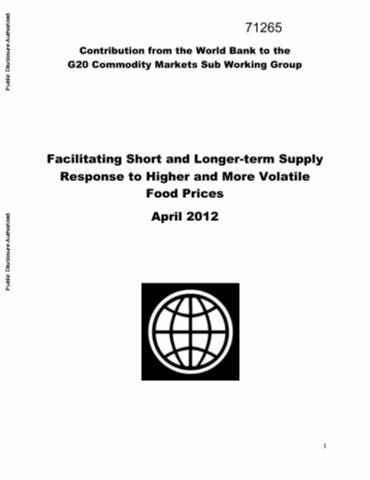Resource information
International food prices spiked for the second time in four years in early 2011, igniting concerns about a repeat of the 2008 food price crisis and its consequences for the poor. International food price uncertainty has also increased along with average levels. Although price volatility is an intrinsic characteristic of agricultural markets, it has increased markedly over the last five years, compared to the previous two and a half decades, even when controlling for inflation. More adverse weather conditions in the main producing regions, rising land and water constraints, and stronger linkages with more volatile oil prices, including through biofuels, tend to place upward pressure on food price volatility. These factors are likely to persist in the short-to medium-term suggesting that volatility may be higher in the future than that observed in the 1980s, 1990s, and early 2000s. Episodes of high prices and extreme volatility create uncertainty that is a major threat to food security in developing countries. Farmers deciding what to plant, and countries deciding when to import, face significant uncertainty with respect to the distribution of future food prices. While producers who are net sellers have welcomed recent periods of high prices, uncertainty as to post-harvest prices is a disincentive to a strong supply response, especially in poorer developing countries. Finally, there is a need to improve the access of farmers to appropriate price risk management tools (financial services, including saving mobilization) to reduce the negative impact of price volatility on production decision and help ensure supply response to higher prices. Improving access to infrastructure, maintaining low inflation (precautionary savings), and financial sector development (reflective of risk management capacity) can help to reduce the negative effective effects of price volatility on production decisions.


